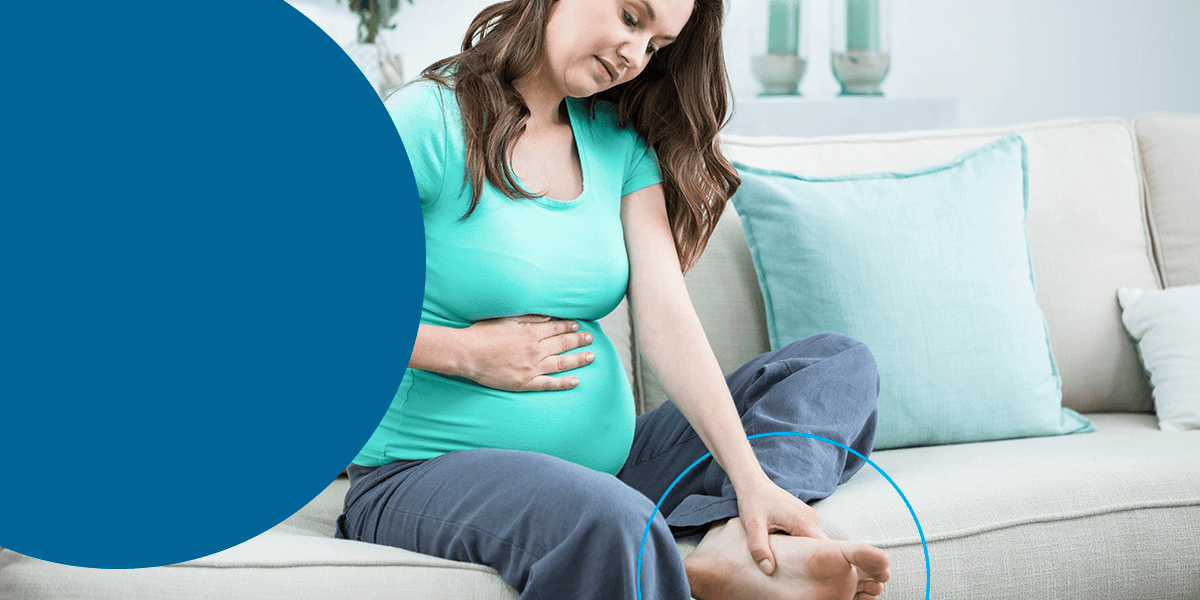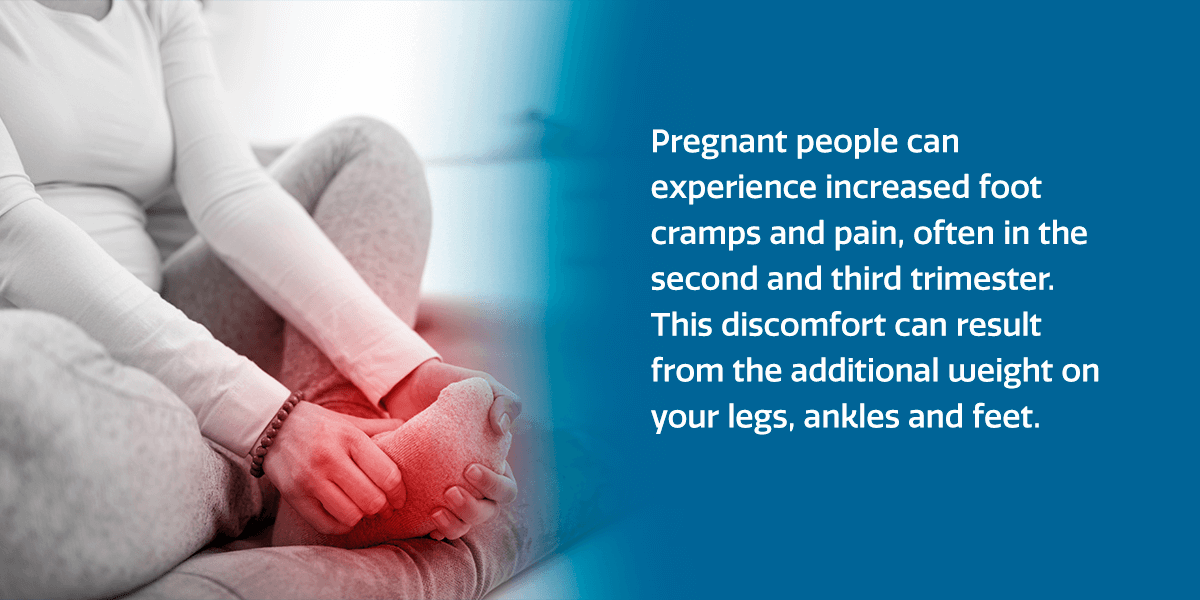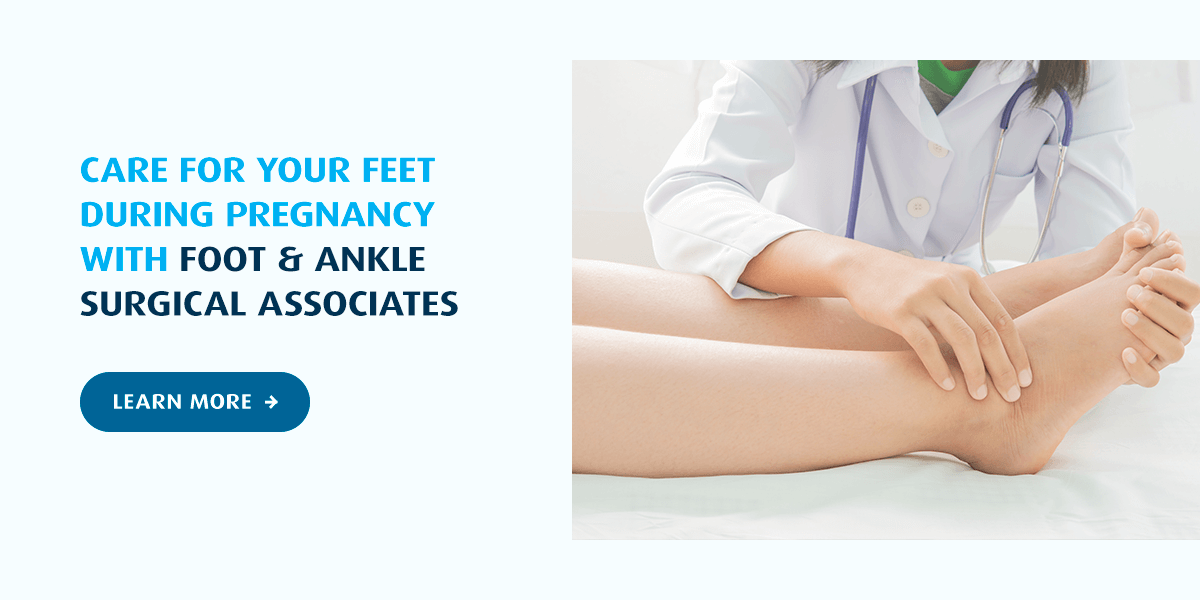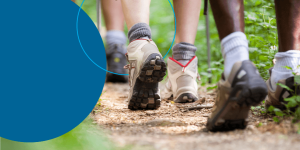
Whether expecting your first, second or third baby, you can experience different body changes with each pregnancy. Changes in foot size, structure and appearance can be expected and unpredictable when it comes to your feet.
If you need help understanding these changes and are experiencing unique foot conditions during pregnancy, we’ve got you covered. With this comprehensive guide, you can learn more about common foot changes during pregnancy, how to relieve and prevent them and suitable professional solutions and treatments.
How Can Pregnancy Affect Your Feet?
Pregnancy can affect your feet in several ways. You may experience swollen feet, changes in your foot size and structure and more frequent cramps and pain.
Less Arch Support
Hormone changes during pregnancy help your body prepare for childbirth. Your relaxin hormone relaxes and loosens your muscles, joints and ligaments, which allows your body to stretch and become more flexible for the birthing process. An increase in this chemical during pregnancy can also relax other ligaments and joints, including your feet and ankles.
When these muscles loosen, your feet might have less arch support to bear additional weight from your growing abdomen. Increased pressure on your feet can lead to a flattened arch and foot structure.
Foot Size Changes
The weight from your growing baby, loser ligaments and joints can impact your foot size. Your feet might broaden and lengthen when your arch flattens, and you might require new footwear to support your foot growth and enhance comfort. For some pregnant people, these size changes can fluctuate and return to normal after birth, while others might maintain an increased foot size post-pregnancy.
Walking Changes
Your gait or the way you walk can change during pregnancy. Flattened foot structure or overpronation can cause this change. Your back, spine and posture can also adjust to support your growing abdomen. A waddling gait, instability or feeling off balance can be normal side effects of foot structure changes.
Edema
Edema or foot swelling is another normal pregnancy side effect. It often occurs in the latter stages of pregnancy. As your womb expands to support your baby, it puts pressure on the blood vessels in your lower body, slowing your blood circulation. Reduced blood flow leads to fluid pooling or water retention in your ankles and feet.
Swollen feet can feel tight and uncomfortable, and fitting into your shoes can be challenging. It can also make it difficult to move around or walk, reducing physical activity. Severe or sudden foot and ankle swelling can be signs of a more serious condition requiring medical attention.
Foot Pain

Pregnant people can experience increased foot cramps and pain, often in the second and third trimester. This discomfort can result from the additional weight on your legs, ankles and feet and the pressure of your growing uterus on your pelvis and veins. Increased pressure on your feet can also lead to conditions like muscle strains, tendonitis and plantar fasciitis, causing inflammation and discomfort.
These conditions can reduce foot strength and cause recurring pain, making moving, walking, driving and enjoying other activities challenging. If you notice severe discomfort, getting a checkup from your medical professional is essential. Your doctor can diagnose and treat related foot conditions, preventing further discomfort.
Ingrown Toenails
Swelling can increase the soft tissue around your toes and nails. It can also change your nail shape and growth. For some people, this combination can lead to ingrown toenails. In-grown nails can be painful and cause difficulty walking and wearing various shoes. It can also lead to infections requiring medical treatment.
How To Alleviate Pregnancy Foot Conditions
While foot issues and pain during pregnancy can impact your movement, comfort and energy levels, there are many ways to ease and treat these side effects.
1. Foot Exercises
Foot exercises can be an excellent way to improve blood circulation, reduce swelling and alleviate cramps during pregnancy. You can gently flex and bend your foot backward and forward to get your blood flowing and relieve pressure on your foot. Rotating your feet clockwise and anticlockwise can also help stretch the muscles and circulate your fluids.
2. Supportive Shoes
Wearing well-fitted shoes with arch support can help reduce joint discomfort when walking and standing. Comfortable and well-cushioned shoes can also alleviate swelling and pressure on your bottom foot, enhancing movement.
3. Custom Orthotics
Custom orthotics include specialized footwear that adjusts to your fluctuating foot size at various pregnancy stages. Your physician can prescribe orthotics tailored to your feet to balance your arch structure and provide optimal foot support and comfort. These orthotics can also help alleviate pain and pressure in your feet, lower back and spine and promote increased foot health during pregnancy.
4. Foot Bracing
If excess abdomen weight is straining your ankles and affecting your balance, your doctor can prescribe custom bracing to stabilize your ankles. Bracing can improve your walk and make moving around more comfortable. It can reduce strains and injury during pregnancy.
5. Compression Socks
Compression socks gently add pressure to your foot, ankle and legs to promote blood flow. Wearing these socks can help reduce water retention, swelling, blood pooling and the risk of blood clots. They can also enhance comfort and make wearing various shoes and moving around more convenient.
Preventive Foot Care During Pregnancy
Here are some ways to prevent foot pain and other issues during pregnancy:
- Foot massage: Gently massaging your feet or getting a partner or professional to rub them can help promote blood flow, reduce swelling and alleviate cramps.
- Warm bath: Soaking your feet in warm water with Epsom salts is a great way to relax your muscles and relieve foot pain. It can also help minimize foot swelling and enhance comfort.
- Elevation: Keeping your feet lifted or raised when sitting for an extended period can promote blood circulation and reduce swelling.
- Shoes: Wearing unsuitable shoes can constrict your feet and blood flow. Ensure you wear well-fitted shoes to provide foot support and comfort during pregnancy.
- Loose-fitting socks: Wear loosely fitted or seamless socks to avoid constricting your blood flow.
- Exercise: Walking and other light physical activity can get your blood flowing and help you manage the additional abdominal weight, reducing pain in your ankles and feet.
- Hydration: Drink plenty of water to stay hydrated and reduce water retention and swelling.
- Low-sodium diet: Prioritizing a low-sodium and balanced diet can help you prevent water retention and excess fluid pooling in your feet and ankles.
- Frequent checkups: Regularly visiting your doctor or specialist is one of the best ways to manage and treat pregnancy foot symptoms like swelling, discomfort and pain.
Care for Your Feet During Pregnancy With Foot & Ankle Surgical Associates
Regular checkups and professional care are essential to identify, manage and treat foot conditions during pregnancy. That’s why Foot & Ankle Surgical Associates offers comprehensive solutions to improve your overall foot health and comfort.
We can identify common pregnancy foot symptoms and related conditions like swelling, pain, plantar fasciitis and tendonitis and prescribe custom treatments to relieve the side effects. Our dedicated staff specializes in various foot conditions and treatments and can support you at every stage of pregnancy and get you back to where you want to be.
For same-day or next-day appointments, complete an online form or call us at 360-754-3338.




